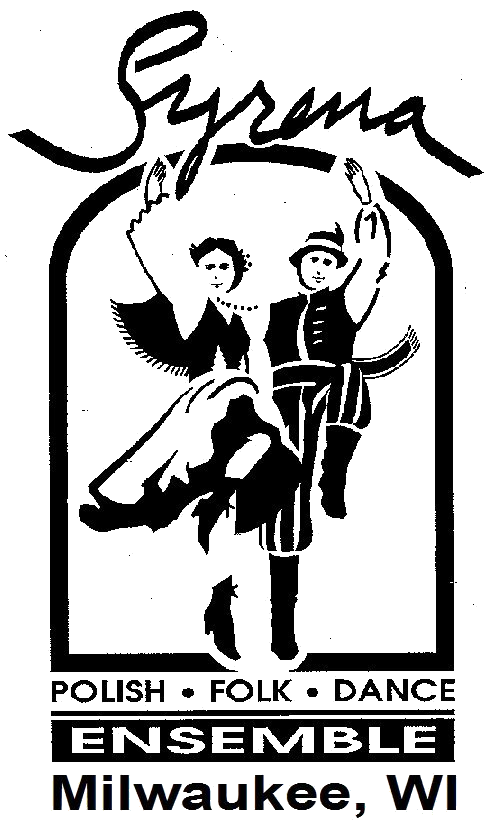Swiecone
On Palm Sunday, Syrena presents its popular Polish Easter buffet “Swiecone,” at Blessed Sacrament Church Hall, S. 41st St. and West Oklahoma Ave. The buffet includes a deliciously prepared variety of traditional Polish delicacies and a vast selection of Polish dessert pastries.
A description of the tradition is below.
The Traditional Polish Easter Celebration by Ada Dziewanowska
Easter traditions in Poland are closely tied with the Spring season and with old customs which often originated in pagan times. In some parts of Poland, the departure of winter was sped up by observing the celebration called “Marzanna”. A big straw puppet, named Marzanna, was dressed in rags, placed on a stick and carried with noisy singing by younger villagers to a nearby river or pond. There the puppet was drowned. If there was no water in the vicinity, the puppet was carried into the fields and burned. Marzanna was the symbol of winter hardships, of illness, and death. Destroying her was the magic which was to bring winter to an end and speed up the coming of the long awaited spring. As some of us may remember, the contrast between the mood of Lent and Easter was tremendous, particularly in Poland. Fasting and mortification for the forty days of Lent was strictly observed. On Good Friday (“Wielki Piatek”), some people limited themselves to bread and water, and sometimes a herring. On that day, sadness and solemnity prevailed. This mood was intensified by the singing in a plaintiff way of mournful Lenten songs while performing chores. In one of these songs, Jesus tragically asks: “Oh my people, my people, what have I done to you, in what way have I saddened you, how have I harmed you? I have freed you from Egyptian captivity, and you have prepared a cross for my arms.” The solemnity of Good Friday was further deepened by visiting of the sepulchres. The faithful visited one or several churches where a life like figure of Jesus was displayed laying in the grave. Soldiers and boy-scouts took turns in guarding the sepulchres. An essential part of the getting ready for Easter was a thorough spring cleaning of the entire house and extensive preparation for the Easter feast: roasting of various meats (sometimes even a whole piglet), smoking sausages, decorating colorful eggs called “pisanki”, mixing vegetable salads, and baking the all important “babka’s”. “placek’s”, and several varieties of special Easter pastries, the “mazurek’s”.
For tradition had it that by Holy Saturday (“Wielka Sobota”), everything had to be ready so that for the next few days the women would be free from work. All the dishes were placed on a long table covered with white linen cloth and decorated with branches of pussy willows and fresh green boxwood. “Wesolego Alleluja” (joyous Alleluia, equivalent to Happy Easter) would appear on various items. For instance, it was “written” on the ham with cloves or lard, and on the “mazurek’s” with almonds or raisins. In the center of the table stood an Easter lamb (“baranek wielkanocny”) with a small red banner with the letters IHS. It was made out of sugar or butter. On Holy Saturday, the food was blessed with holy water by a priest. He would either come to the house, or samplings of dishes would be taken to church in a basket covered with a white linen napkin, where a general ceremony of blessing of the food would take place. The word “to bless” in Polish is “Swiecic”, hence the name of “Swiecone” for the Easter Buffet. Finally, Easter Sunday (“Niedziela Wielkanocna”) would arrive. One was not allowed to taste the Easter feast before attending mass, which could be as early as 6:00 AM. During the mass the joyous Easter songs would burst forth, making one forget about the sacrifices of Lent. When all the family and friends gathered at home, just before the start of the meal, the father or mother would take a plate of quartered blessed Easter eggs and approach everyone in the room offering a piece and wishing “Wesolego Alleluja”. Then everyone would eat and drink heartily to make up for all the fasting during Lent. The Easter buffet “Swiecone” lasted for at least two days with various guests visiting. It was therefore very practical to have cold dishes to eat.
Easter Monday “Poniedzialek Wielkanocny” was also a holiday. It was a very special day, remembered forever by anyone who took part in it. It was called “Dyngus” or “Smigus”, and on that day young men sprinkled girls with water. They would take the girls by surprise and in olden times – and even now, pour a whole bucket of water on the poor victims who would run away screaming. Sometimes a girl was even dragged to the village pond and immersed. In town, however, a man just sprayed some perfume from an atomizer on the girls neck. It was only the unpopular girl who survived the day without ever being drenched or sprayed. There are many theories on how this custom began. One is that it might have originated in pagan times as a fertility rite. Many of these and other Easter traditions are still observed in Poland and among the many Poles abroad.
